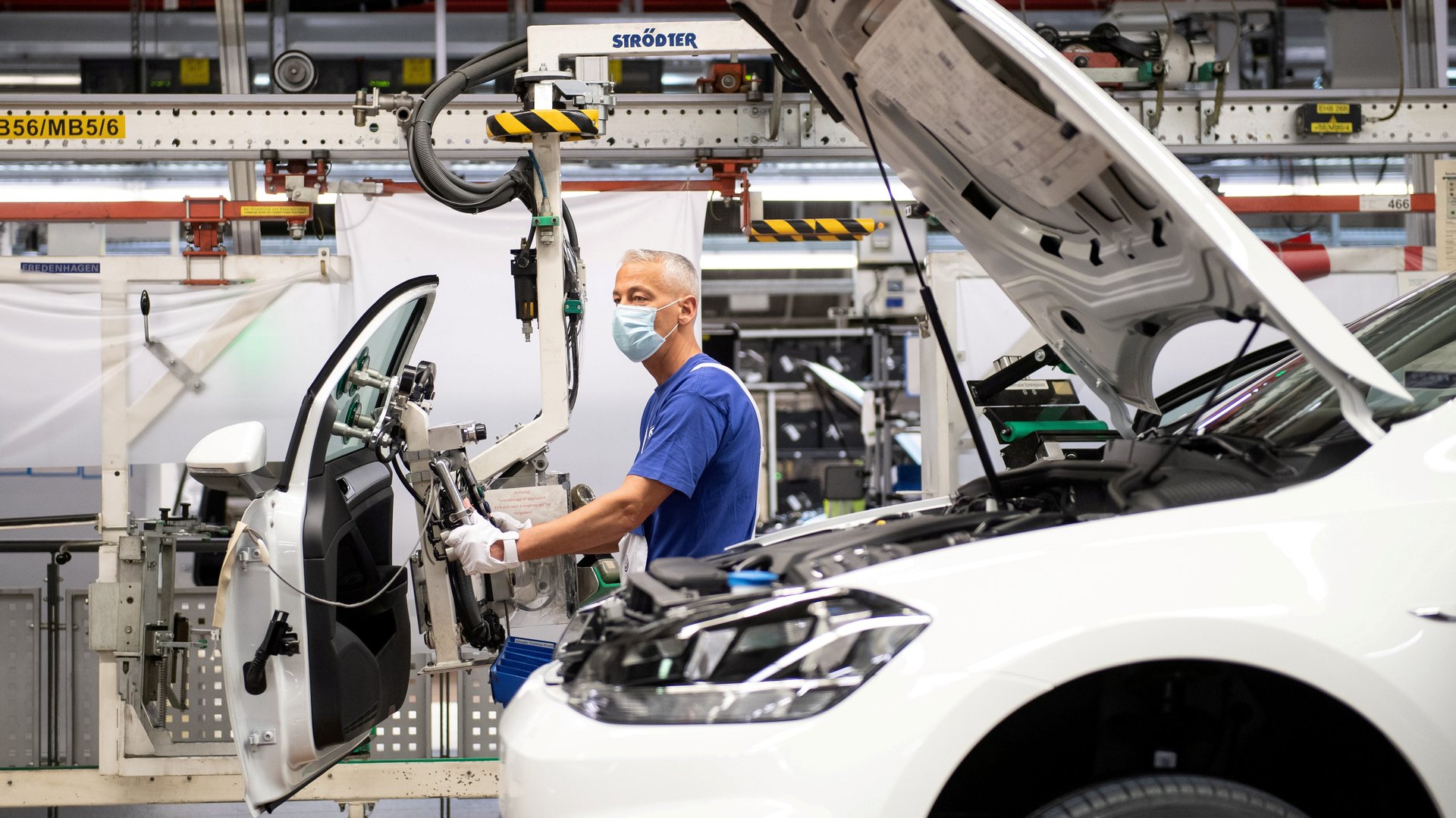What to expect from Europe’s economic recovery in 2021
The European economy will likely contract by 7% this year—its largest dip since World War II. That’s due to months of lockdowns imposed by governments eager to stop the spread of a virus that has killed close to 376,000 people in Europe in the last year.


The European economy will likely contract by 7% this year—its largest dip since World War II. That’s due to months of lockdowns imposed by governments eager to stop the spread of a virus that has killed close to 376,000 people in Europe in the last year.
While there’s no V-shaped recovery in sight, the IMF expects Europe to grow by around 4.7% next year, with much of the growth coming in the second half of 2021 as more people get vaccinated against Covid-19, travel restrictions soften, and grants and loans to fragile economies kick in from the EU’s €750 billion ($920 billion) recovery fund.
The assumption underlying many economic models “is that we will reach herd immunity in Europe by the end of 2021,” says Nadia Gharbi, senior economist at Pictet Wealth Management in Switzerland. “By the end of Q2, we expect [lockdown] measures to be almost all lifted.”
Already, the IMF has improved its June forecast for Europe—when it predicted an 8.5% contraction for 2020—in light of a boom to retail sales that followed the end of lockdowns over the summer, and a better-than-expected performance from the manufacturing sector, driven by demand from Asia.

As analysts look for signs of an impending rebound next year, many will turn to the Purchasing Managers’ Index (PMI), a survey that reflects the outlook of a representative sample of companies in key sectors. Any reading above 50 is an improvement, below 50 is a contraction, and 50 suggests no change.
The preliminary, or “flash” PMI index for November showed a reading for the euro zone of 49.8, up from 45.3 in November, meaning Europe’s economy contracted less that month than it did the month before. Manufacturing output also grew on average across Europe, thanks to strong demand from Asia.
European economies are particularly export-oriented, notes Emily Mansfield, principal economist for Europe at The Economist Intelligence Unit. That makes them especially sensitive “to trends happening elsewhere in the world.”

European businesses are clearly feeling buoyed by news that the UK, the US, and Canada have started vaccinating their populations—and that the EU could approve the Pfizer/BioNTech jab, and later the Moderna vaccine, in the next couple of weeks. The euro zone flash PMI shows that managers’ future output expectations, paced by manufacturing, jumped to their highest level since April 2018.
However, Europe’s services sector contracted for the fourth consecutive month, thanks to strict lockdowns that shuttered bars, restaurants, and hotels, while restricting travel. “You’re now seeing pockets of damage to the economy,” as opposed to an overall crisis, says Chris Williamson, chief European business economist for IHS Markit, the financial data firm that produces the PMI. Service sector exports collapsed to a historic low score of 14.2 in April, and have rebounded since, but were still only at 40.7 in December.
There are a lot of unknowns that could throw Europe’s projected economic recovery off-course—most notably Brexit, which should impact both manufacturers and the service sector in large economies that trade heavily with the UK, like the Netherlands and France. But there are also questions, says Mansfield, as to how quickly the EU will be able to distribute recovery grants and loans to prop up struggling economies like that of Spain. “The question is when can the EU get those funds out,” she says, “and allow countries to start drawing down and getting their projects underway.”